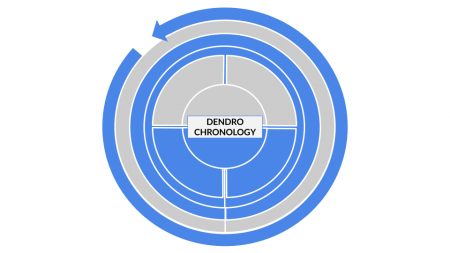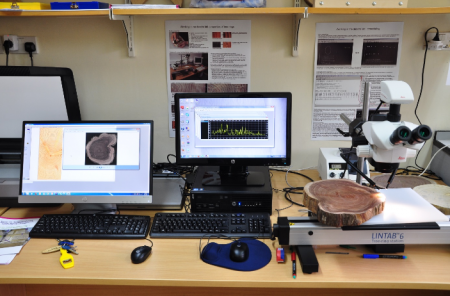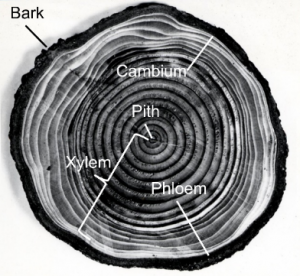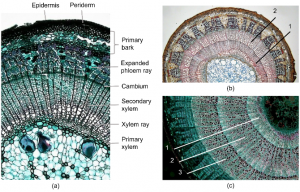Difference between revisions of "Dendrochronology"
Oskarlemke (talk | contribs) |
Oskarlemke (talk | contribs) |
||
| Line 18: | Line 18: | ||
==Visualisation of a typical result== | ==Visualisation of a typical result== | ||
[[File:ResultVisualisationDENDROCHRONOLOGY.png|450px|thumb|left|Figure 1: modern dendrochronology lab with software for measuring and cross-dating rings and a scanner (Foster 2013a)]] | [[File:ResultVisualisationDENDROCHRONOLOGY.png|450px|thumb|left|Figure 1: modern dendrochronology lab with software for measuring and cross-dating rings and a scanner (Foster 2013a)]] | ||
| + | |||
| + | |||
| + | |||
| + | |||
| + | |||
| + | |||
| + | |||
| + | |||
| + | |||
| + | |||
| + | |||
| + | |||
| + | |||
Revision as of 15:10, 18 April 2023
| Method categorization | ||
|---|---|---|
| Quantitative | Qualitative | |
| Inductive | Deductive | |
| Individual | System | Global |
| Past | Present | Future |
In short: Dendrochronology is concerned with the analysis of tree rings, whose chronological sequence can be used to date wood samples and infer information on environmental conditions, stressors and their effects on the plant species.
Visualisation of a typical result
Background
Various scientists had been aware of tree rings and their connection to climate for several centuries already, however the term ‘dendrochronology’ was coined by A. E. Douglass from the University of Arizona in 1929. He used the method of tree-ring dating to determine the age of ancient indigenous buildings, which helped the Navajo peoples’ compensatory claims to succeed (Stokes & Smiley 1996). Tree ring analysis or dendrochronology is applied in many disciplines like climatology, archaeology, biology, hydrology and forestry. It can be applied to any plant species that has a woody growth type (including shrubs) and any woody parts of the plants (including branches, twigs and roots). Seasonal growth, the number of growth rings and the ring widths, is determined by the interaction of genetic and environmental factors. For example, a poplar forms wider rings than a bilberry growing under the same climatic conditions (Schweingruber 1988). Furthermore, in order to analyse seasonal growth rings only one environmental factor must dominate in limiting the growth. This limiting factor can be precipitation in arid, semi-arid or tropical parts of the world or temperature like in the temperate regions (e. g. dry and wet season in tropical forests, winter and summer in temperate forests).
The structure we see as rings is a sequence of earlywood and latewood in the secondary xylem tissue of a stem. Secondary growth reflects an increase in thickness, or lateral additions of new tissue, and essentially this secondary xylem is an important resource known as wood. The xylem is the water and nutrient conducting tissue in vascular plants. Cells for the secondary xylem are generated by the cambium layer. The cambium is a zone of undifferentiated cells that produce cells of the xylem to the centre of the stem and cells of phloem to the outer part of the stem. The phloem is the plant tissue for transport of sugars (assimilates). Xylem and phloem together form the vascular system of plants throughout the stems, branches and roots. For every vegetation period, governed by one limiting environmental factor, the cambium generates xylem to the inside of the stem and phloem to the outside. The cambium will generate more secondary xylem than phloem and old outer phloem tissue will be crushed and eventually become bark. This is why woody species accumulate more and more secondary xylem each year and not secondary phloem. The oldest rings are close to the centre of the tree stem, the youngest near the cambium and bark (Fig. 3).
Growth rings can be recognized because in the beginning of the vegetation period earlywood is being produced with larger, thin-walled cells, whereas at the end of the vegetation period latewood with smaller, thick-walled cells is produced that appears darker. The abrupt change between latewood and earlywood cells is the annual growth boundary that can be usually also recognized without magnification (Fig. 4).
The authors of this entry are Heike Zimmermann and Fabienne Friedrichs.



